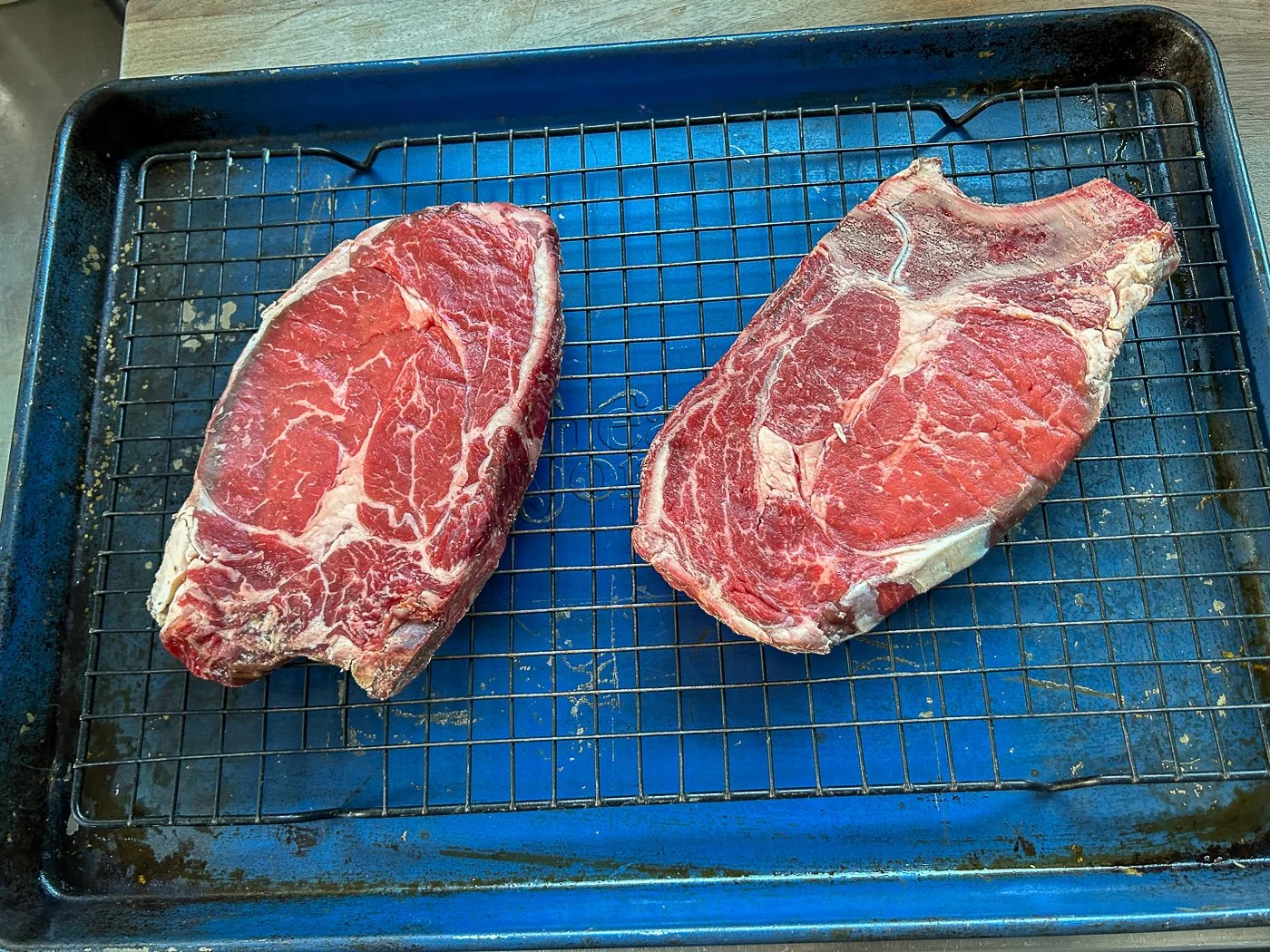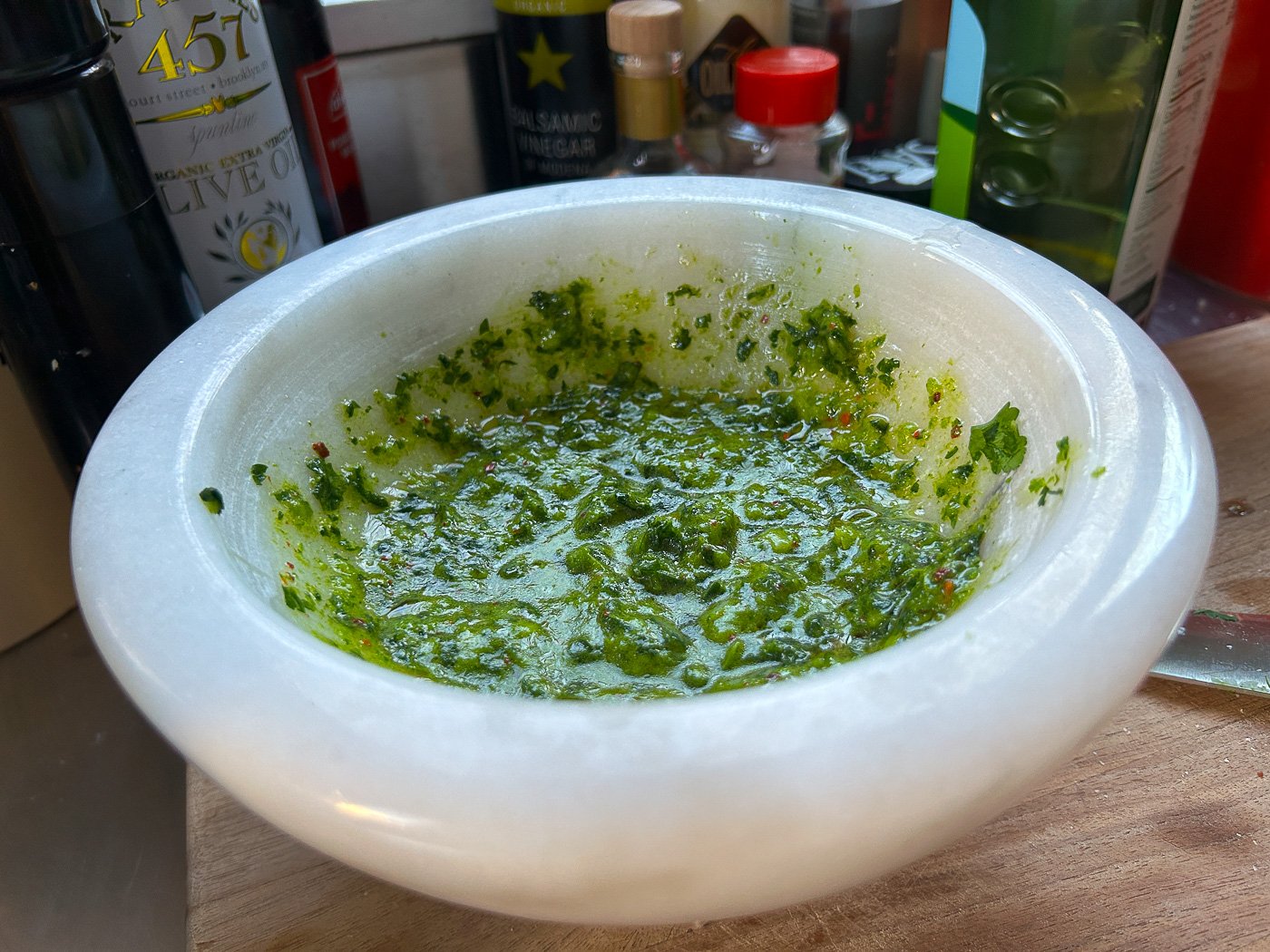Grilled Ribeyes with Chimichurri
Anyone who knows me in real life knows that I get bees in my bonnet; spontaneous obsessions that I can’t shake off, no matter how hard I try. Lately, it’s been gardening (you should see my rhododendrons) and, in the same spirit of wanting to be outside more, grilling. Only: I know nothing about grilling. When I lived in L.A., I shared an outdoor space with three other apartments and there was a Weber out there that I used once and never used again. (The yard had a view of a gas station and it was kind of depressing.)
Now we’re lucky enough to have our own patio in Brooklyn (hence all the planting in pots — see upper right) and even though it’s still March and spring hasn’t officially sprung yet, I officially took it upon myself to order a Weber Grill to relaunch my career as an amateur grillmaster. I equipped myself with two tomes — Steve Raichlen’s How to Grill and Bon Appetit’s The Grilling Book — watched a lot of YouTube videos and yesterday, finally, I got to work.
I set myself up for success by buying two one-pound bone-in ribeye steaks from my local butcher, Paisano’s. These were beautiful enough to eat raw. Okay, maybe not, though we did go to a 1975 concert at Madison Square Garden and the lead singer did eat a raw steak live on stage. The point is: with all of that marbling, these steaks would be pretty hard to screw up.
But I wasn’t taking any chances. Following the advice from the Bon Appetit book, I patted the steaks dry, seasoned them with salt, and let them sit on a wire rack for an hour. Then I re-seasoned them with more salt and black pepper, took ‘em outside, and threw them on to the hot side of the charcoal grill where they immediately started to sizzle.
Here’s where the real art of working the grill began. Following Steve Raichlen’s advice, I created a two-zone situation by piling all of the hot coals on one side (I used a chimney starter, just like Ina), leaving the other half empty so I could move the steak there if the dripping hot fat caused the coals to flare up. Those flare-ups give the meat a chemical, acrid flavor, according to the experts, so whenever that happened, I shifted the meat over.
The goal here is to get a really charred, golden brown surface without overcooking the meat. You achieve that by flipping every three minutes until a thermometer reads between 130 and 135 for medium-rare. That’s exactly what I did, taking them off immediately and letting them rest for ten minutes. I threw some asparagus on there in the meantime and then carried everything back inside to dress with chimichurri.
This I made in my mortar and pestle by pounding three cloves of garlic with lots of parsley (you could also add cilantro… and a chili pepper) until I had a deep green paste. Then I stirred in fresh lime juice, some salt, some Aleppo pepper, and enough olive oil to make it saucy.
I drizzled this over the steaks, and served more alongside the dinner which also featured roasted potatoes and the quickly charred asparagus. (Note to self: trim off the woodsy ends next time.)
There was so much I loved about this process: (1) The steaks didn’t smoke up my kitchen like they would if I did this in a cast iron skillet (which I normally do); (2) the heat of the grill got a better char than anything I could accomplish in a skillet; (3) it was nice being outside with my plants; (4) it’s fun to play with fire; (6) it smelled so good; (7) there was less to clean up.
So in conclusion, I’m planning to grill a lot this late winter / early spring / summer summer summer. The only question that remains is: what to grill next?







